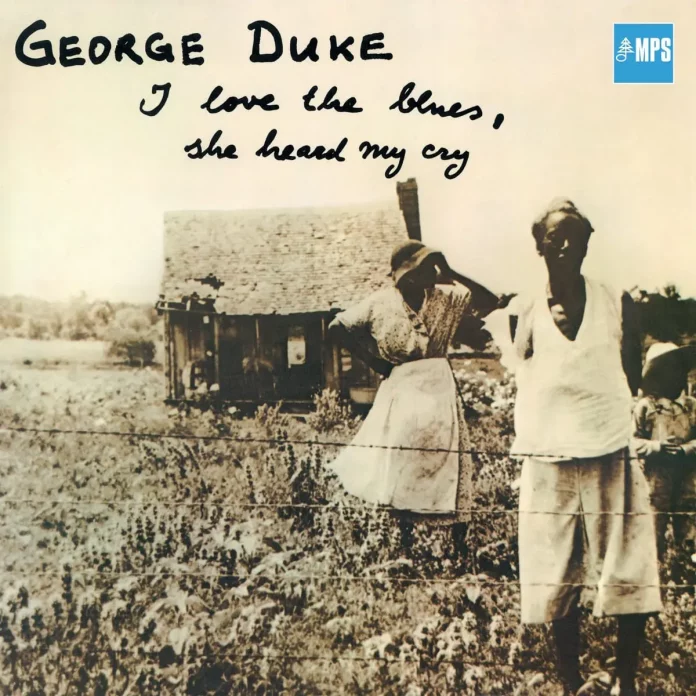The sixth album that George Duke recorded for MPS records, I Love The Blues, She Heard My Cry is one of the most ambitious of the series, captivating in its own right, but also setting the stage for the jazz-funk style that would bring Duke more mainstream success in the late 1970s. Among Duke’s releases, I Love The Blues, She Heard My Cry has some of the most pronounced Zappa influence, in terms of personnel and style, but features all Duke’s own work except the fifth track, Mashayu, by percussionist Emil Richards.
Although the preceding MPS album, The Aura Will Prevail, had one Zappa song and one co-write, and the one before that, Feel, featured Zappa himself on two tracks, it was this album that presented the kind of humorous musical bricolage that exemplified Zappa’s unique style. The tongue in cheek Rokkinrowl, I Don’t Know opens with a phone call sketch in which Duke is asked about his new musical direction, before Captain Beefheart-esque vocals and a guitar-driven riff. On the other hand, the glittering synths of Prepare Yourself give way to a soft-funk instrumental.
Sister Sirene is a slow, R&B style track, which fades away before That’s What She Said opens with a tight bass line and funk guitar, in which Underwood’s marimba and John Wittenberg’s violin play a very Zappa-style melody in unison, followed by a light and crunchy guitar solo from Daryl Stuermer. The title track closes the album, two brittle electric guitars playing a blues chord progression with ambient sounds of passing vehicles and people talking in the background. Duke is joined by Johnny “Guitar” Watson.
Along with the stylistic influence, several musicians on the album are other Mothers Of Invention, alongside Duke who had rejoined Zappa in 1973. They include Tom and Bruce Fowler on bass and trombone respectively, and legendary percussionist Ruth Underwood. However, while the Zappa influence is notable, Duke’s own musical inventiveness and humour, that was to become a key feature in his later releases, is clear throughout the album. Of all of Duke’s early recordings, I Love The Blues, She Heard My Cry is one that stands out for its originality and scope, and is definitely worth listening to.
Discography
Chariot; Look Into Her Eyes; Sister Sirene; That’s What She Said; Mashavu; Rokkinrowl, I Don’t Know; Prepare Yourself; Giant Child Within Us – Ego; Someday; I Love The Blues, She Heard My Cry (40.58)
Duke (syn, elec, elp, clavinet, v); Flora Purim (v); John Watson (g, v); Lee Ritenour, George Johnson, Daryl Stuermer (g); Byron Lee Miller (b, g); Tom Fowler (b); Leon “Ndugu” Chancler (d, gong, v); Airto Moreira (pc); Emil Richards (mar, pc); Ruth Underwood (mar, gong); John Wittenberg (vn); Bruce Fowler (tb); and others. California, 1975.
MPS Records
















